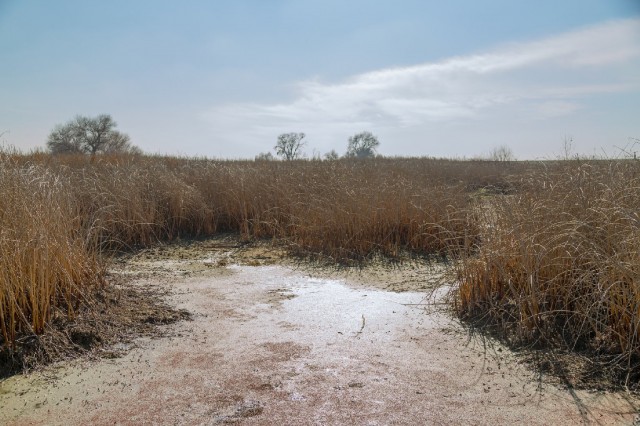
Two California waterways — one a major Central Valley river, the other a Peninsula creek, and both the subject of controversy — are featured on an annual list of the most endangered U.S. rivers.
American Rivers, a conservation group dedicated to preserving and restoring wild streams across the country, named the San Joaquin River the nation’s No. 1 most endangered waterway. San Francisquito Creek, a stream that runs from the Peninsula hills down through the campus of Stanford University into San Francisco Bay, is No. 5 on the American Rivers list.
Calling the San Joaquin “endangered” is a bit of an understatement. Long stretches of the river have run dry since Friant Dam, northeast of Fresno, was completed in the late 1940s. The river is heavily tapped for the San Joaquin Valley’s farms and growing cities. And it’s the subject of an ongoing congressional battle over a court-approved plan to restore flows to the river to allow re-establishment of chinook salmon runs wiped out when the river was dammed.
American Rivers points out that the state of the San Joaquin is actually a Bay Area story. That’s because 2.5 million people in San Francisco, the Peninsula and southern Alameda County get water from the Tuolumne River, one of the San Joaquin’s big tributaries. (Through its Hetch Hetchy system, San Francisco also uses the Tuolumne to generate its municipal power supply.)
Here’s the group’s summary of the threats the river faces:
Years of managing the San Joaquin for agriculture, hydropower, and flood control have taken their toll on the river. Dams, levees, and excessive water diversions have hurt river habitat and opportunities for recreation and community access. Over one hundred miles of the mainstem river have been dry for over fifty years, and water diversions along the tributaries take more than 70 percent of the natural flow. The river’s salmon and steelhead populations are on the brink of extinction. Excessive diversions, groundwater overdraft, and unsustainable water management have also made communities vulnerable to increasingly frequent and severe droughts.
The present drought places additional stress on the river and its communities, but we must not allow the drought to force rash decisions — like cutting environmental protections — that will harm the river, fish and wildlife, and communities for years to come.
In naming San Francisquito Creek one of the most endangered streams in the country, American Rivers is drawing attention to a long-running battle over Stanford University’s Searsville Dam.